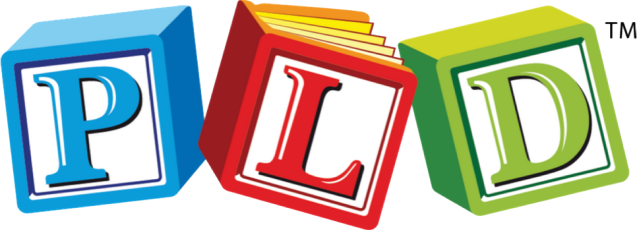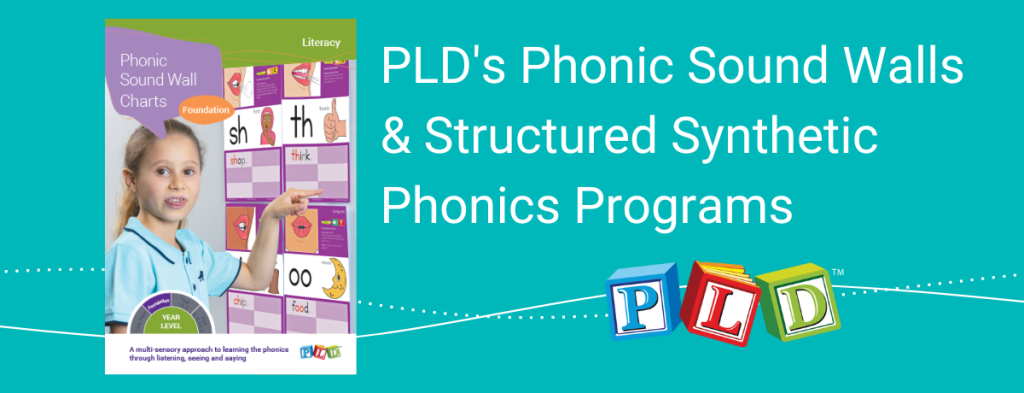As with any teaching resource, there are different ways sound wall displays can be introduced, displayed and utilised. As sound walls are a fairly new instructional tool, it is important to provide information on how to use them to their full potential. Click here if you would like to read more about sound walls and SSP, and how they are superior to phonic word charts.
Tip 1: Build the Sound Wall Display Gradually Over Time
PLD does not advocate displaying all of the charts in a display at the beginning of the school year. Only display the PLD sounds that have been explicitly taught to the class. Sound wall displays will extend over time and reflect the teaching and learning that has and is occurring within a classroom.
Tip 2: Use the Sound Wall Display as a Tool for Daily Review
Elevate daily instruction and promote automaticity during whole-class instruction by reviewing the concepts on the sound wall display every day. Referring to the display as often as possible will encourage students to reference the charts during independent work.
Tip 3: Focus on the Mouth (& Sound Production)
Focus students on phonemes and enhance the connection between speech and print. Use the articulation cues to focus on what the lips, teeth, tongue and vocal chords are doing to produce the sound. Remember, as teachers you are not expected to deliver ‘speech pathology’ articulation prompts, but the charts feature snappy, simple, and accessible descriptions for teachers and students alike.

Tip 4: Focus Students From the Top to the Bottom of Each Chart
Start at the top of the charts and orientate students to the phoneme and how it is produced. Next, the middle section of the chart links phonemes to graphemes (letters) representing that sound. Finally, words can be added to the word bank area at the base of the chart.

Tip 5: Add New Words as a Matter of Routine
A sound wall display should not be a static display. In the dedicated area at the base of the charts, additional words are to be added over time. In this way, teachers and students will create classroom-specific word lists collaboratively.
Concluding Words
Remember, sound wall displays will only be a useful tool if they are matched with tight, structured, and explicit phonic instruction. The displays are a support and reference item that will complement high-quality classroom instruction.
PLD’s Range of Phonic Sound Wall Charts
- Sound Wall Charts for the Early Years (26 A4 coloured charts which focus on the alphabet)
- Sound Wall Charts for Foundation (42 A4 coloured charts which focus on the alphabet and Stage 1 digraphs)
- Sound Wall Charts for Year 1 (49 A4 coloured charts which focus on the alphabet, Stage 1 & Stage 2 digraphs)
- Sound Wall Charts for Year 2 & 3 (71 A4 coloured charts which focus on Stage 1, Stage 2 & Stage 3 diagraphs)
Further Reading
About PLD Literacy
PLD provides an Australian, evidence-based approach to Structured Synthetic Phonics (SSP) for primary school educators. Aligned with the Science of Reading, PLD’s SSP approach extends from the Junior Primary years through to the Upper Primary years and thereby facilitating a whole school approach.
PLD’s method is derived from the disciplines of speech pathology, occupational therapy and education. As an Australian publisher and professional development provider, PLD advocates that literacy and learning outcomes are maximised for children when their Literacy, Oral Language and Movement & Motor skills are targeted.
PLD’s Structured Synthetic Phonics Teaching Overview
PLD’s Structured Synthetic Phonics (SSP) program is an Australian evidence-based whole-school offering that is aligned with the Science of Reading. The PLD teaching sequence commences with initial (simple) code and gradually introduces extended code. All of the PLD programs are supported by downloadable teaching sequences and companion screening and tracking manuals for each primary school year level; Early Years, Foundation, Year 1 & 2 and Year 3, 4, 5 & 6.
AUSPELD Recommends PLD Programs
PLD has a positive working relationship with SPELDs in various states. Many of the SPELDs have been supplied with a full collection of the PLD programs for their libraries and PLD also collaborates annually with workshop presentations throughout Australia.
AUSPELD provides recommendations on evidence-based programs that are backed by current research, linked to improved academic results and supported by independent reviews of the effectiveness of the program. This allows schools to make informed choices on the programs they implement and thereby preventing the number of students with a dyslexia diagnosis.
AUSPELD applies the three-tier approach to implementing Structured Synthetic Phonics (SSP) in schools. This is explained here.



 print
print